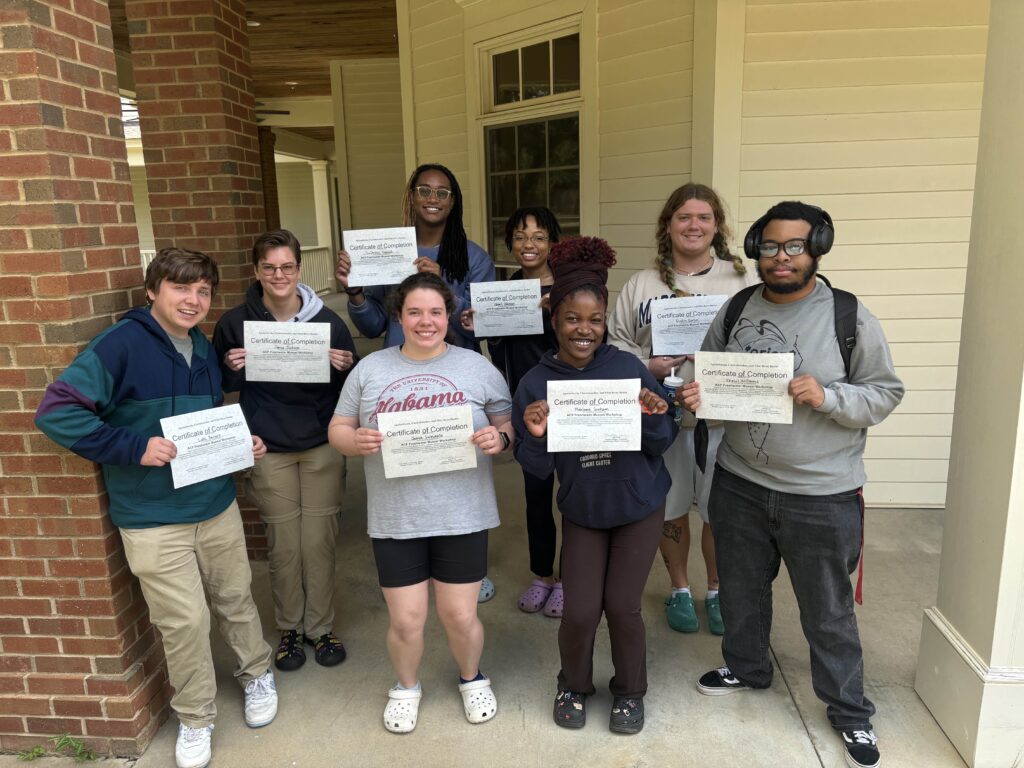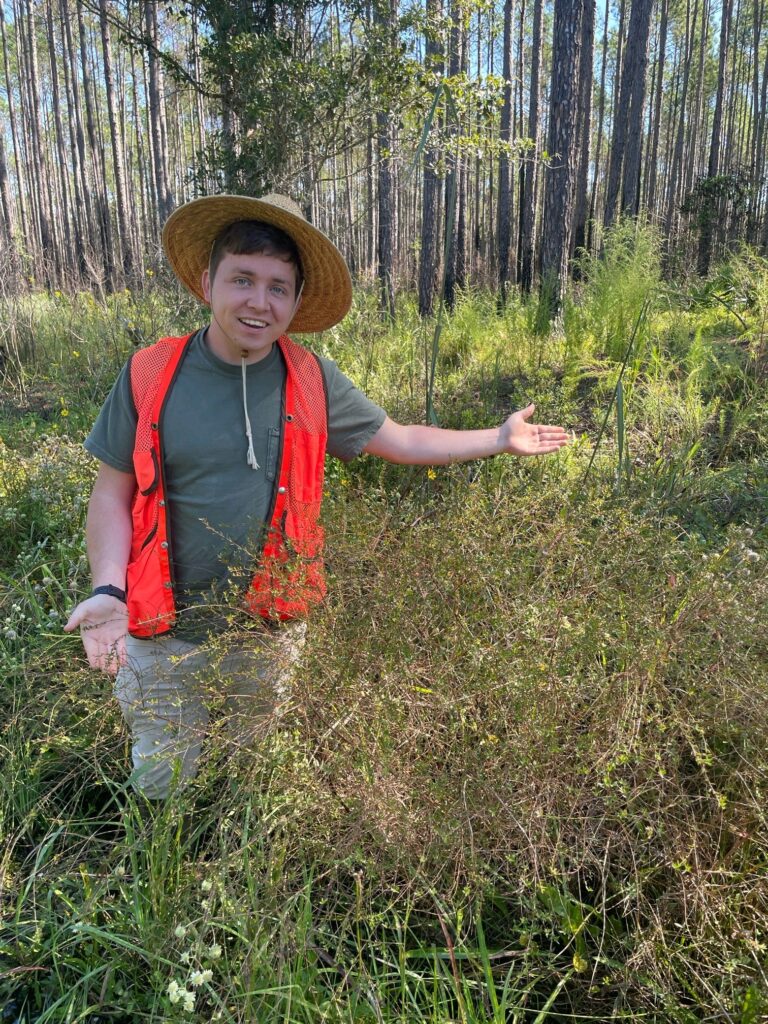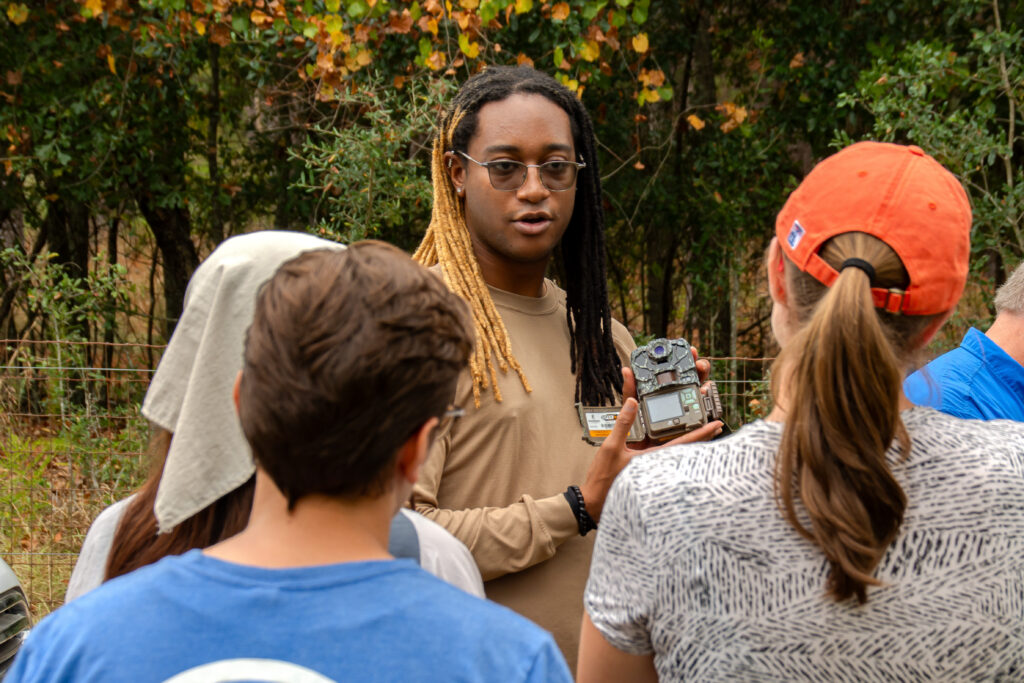Breaking Molds: The First Cohort of the RaMP Program at The Jones Center
In its time, The Jones Center at Ichauway has hosted hundreds of incredible students, staff, and STEM professionals, many of whom become leaders in their field and hail from diverse backgrounds. Some of this variety is attributed to The Jones Center’s partnerships with R1 Universities which often provide access to research opportunities, resources, and experiences that are lacking at smaller universities or community colleges. Partnerships between organizations and R1 Universities exist nationwide within private and public institutions. In many cases, these relationships funnel undergraduate students into seasonal positions where they build connections, attain experience, and receive mentorship to become competitive for future opportunities, such as graduate research projects. While this structure has created opportunities for many people in natural resources as well as other scientific fields, there is still ample room to improve the diversity of these opportunistic pathways.

In a partnership with The University of Alabama, The Jones Center welcomed its first cohort of the Research and Mentoring for Postbaccalaureates (RaMP) program in June 2024 andexpects the second cohort of this year-long program to arrive in December. Funded by the National Science Foundation (NSF), this program seeks to provide experience, training, and mentorship to recent college graduates coming from under-resourced schools with limited opportunities. Additionally, there is targeted recruiting for students of groups underrepresented in STEM and first-generation college graduates. Overall, the objective is to provide participants of this program with training and experience that will translate to a range of career pathways in the biological sciences.
The Jones Center is primed to meet the goals of the RaMP by providing a unique combination of opportunities in research, management, and education, The first cohort spent three weeks rotating through the Center’s nine research labs to get acquainted with research staff and familiarize themselves with ongoing projects. This important step allowed them to expand their scope of knowledge and experience while considering their own career goals and interests. After lab rotations, each member of the RaMP cohort was paired with a research lab they had expressed interest in working with more closely. This format provides a stable work environment, designated mentor, and opportunity to hone their skill set by developing an independent research project.
The first RaMP cohort selected the Affiliate Mussel Conservation Lab, Aquatic Sciences Lab, Plant Ecology Lab, and Wildlife Ecology Lab where the scientists and research associates (RAs) in each lab serve as project mentors. In addition to individual mentorship, RaMP participants will have the opportunity to take a deeper dive into select topics through immersive experiences, which are part of a broader educational program at The Jones Center. Different experiences in different disciplines allow the RaMP mentees to develop unique research ideas and questions.
RaMP mentee, Jenna Jackson (Affiliate Mussel Conservation Lab), is investigating “trends in species zonation of freshwater mussels through a microhabitat analysis.” She has taken an enthusiastic dive into the freshwater mussel research world and will “sample sediments across belt transects at Spring Creek in order to classify the sediment texture and determine bulk density.” She will also include biotic and abiotic factors such as mussel species presence, dissolved oxygen levels, temperature, and more! Her project stems from a lack of data in these systems where her research will support a larger effort to develop a Habitat Conservation Plan for freshwater mussels for the Lower Flint River Basin.


Luke Barnes (Plant Ecology Lab) is developing a project that looks at seed germination protocols for Curtiss’ loosestrife (Lythrum curtissii), a threatened species of wetland plant. He is also developing a protocol to conduct a tetrazolium test for the species, which determines seed viability. L. curtissii is considered critically imperiled and Luke’s project will help develop methods to ensure its survival.
Over in the Wildlife Ecology Lab, LaDerrius Hannah is studying the effects of bobwhite quail feed lines on predator abundance. Supplemental feeding is often used in quail hunting programs; however, the feed often attracts other prey species, such as mice and rats. Does that mean more predator species are visiting these areas during supplemental feeding? LaDerrius is deploying game cameras to record images of animals along the feed lines to find out!
Lastly, Jewell Johnson found her home in the Aquatic Sciences Lab. She and her labmates are working with a gas chromatographer to determine the rate that certain gases move between wetlands and the atmosphere. While still in project development, Jewell stated, “I want to understand nutrient fluxes. (.…) Looking at the relationship between these fluxes and wetland conditions can help me predict flux trends when looking at similar types of wetlands in the future.” Her work will increase understanding of hydrologic and biogeochemical interactions between wetlands and the surrounding environment in a changing climate.
This first RaMP cohort and their research projects will help guide the continued development of this program. Scientists and RAs serving as mentors have noticed the positive impacts created by the addition of a RaMP mentee to their labs.
Dr. Nick Marzolf noted, “Jewell has been a tremendous addition to the lab and has been a quick study in the many approaches in studying rivers and wetlands. (….) I hope she has enjoyed her time in the lab and this time was constructive in her development as a scientist and as a person.” To complement Dr. Marzolf, RA Jamie
Rogers mentioned, “Overall, I’ve really appreciated having a perspective in the lab that doesn’t come from the strictly traditional aquatic sciences background. I think it has helped us relate our work in new and different ways and think about how we communicate to all different types of backgrounds. I’m looking forward to continuing to be involved in the program in the future!”

In the Mussel Lab, RA Caitlin Sweeney reports, “We were impressed by them all and delighted that one of them chose to collaborate with us. Jenna has done an excellent job of making progress on her research project while also doing our lab’s typical work. Our whole lab is excited about contributing to her project and seeing what results she’ll get.”
While individual projects have been at the forefront of thought for our RaMP mentees, their labs have provided opportunities to build additional skills that are useful across disciplines. Wildlife Ecology Lab RA Gail Morris noted that “…in addition to his project, [LaDerrius] has been learning wildlife techniques including conducting trail camera surveys, radio telemetry, and small mammal trapping. He has also been building skills in data management and using program R. He has been working with members of the lab at all levels including [Dr. Mike Conner], grad students, and technicians.” LaDerrius was able to apply these skills by instructing a portion of a Wildlife Ecology Immersive Experience, part of The Jones Center’s internal curriculum. Simultaneous development of personal and technical skills in a STEM environment may prove to be one of the strengths of the RaMP program, and something The Jones Center aims to continuously improve.

In addition to working on a research project and developing a diverse skill set, the RaMP cohort is focused on narrowing down their career goals. After approximately four months of the program, mentees describe “developing a solid foundation” for their career path, “gaining a new lens” of understanding towards a topic, and attaining “a holistic perspective on the reality of life in the scientific field.” This feedback highlights the overall goals of the RaMP program and adds a new facet to the opportunities that The Jones Center provides. While the RaMP will continue through 2027, this first cohort will have a lasting impact at The Jones Center towards attaining the program’s fullest potential and breaking the molds of a traditional pathway into science and natural resources.